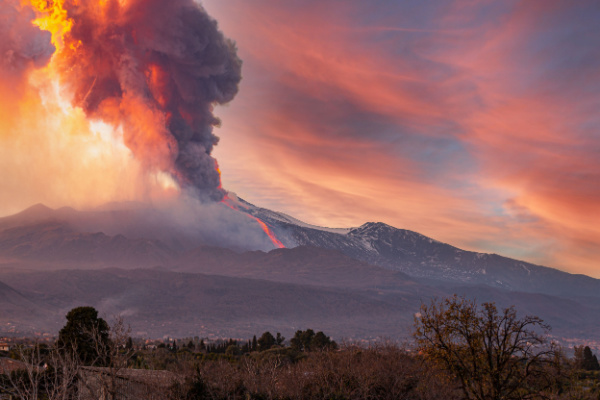Mount Etna, Europe’s most active volcano, was erupting on Sunday, spewing ash on Catania, eastern Sicily’s largest city, and forcing a suspension of flights at that city’s airport.
Italy’s National Institute of Geophysics and Volcanology, or INGV, which closely monitors Etna with instrumentation on the slopes, noted that cloud cover on a rainy day was impeding views of the eruption, which often serves up a spectacular display of flaming lava during the volcano’s not infrequent eruptions.
The institute said that ash had fallen on Catania and at least one town on Mount Etna’s inhabited slopes. No injures were reported. However, Catania airport reported that due to the heavy ash fall, flight operations were temporarily suspended.
INGV indicated that monitoring had recorded evidence of a stepping up in tremor activity in recent days. People in the towns of Adrano and Biancavilla reported hearing loud booms emanating from the volcano on Sunday, the Italian news agency ANSA said.
Italy’s national Civil Protection agency had noted on Thursday in an alert that in view of increased volcanic activity, “sudden” variations of Etna’s activity could occur. In early 2021, an eruption of the volcano lasted several weeks.
For many of the active Italian volcanoes, the signals recorded by some INGV seismic stations can be viewed in real time. For Etna, Stromboli and Vulcano, images taken by some webcams and thermal cameras are also available. Click here to view Etna’s current status.
—
Photo Credit: Alanstix64 / Shutterstock.com
